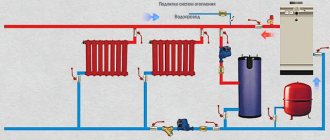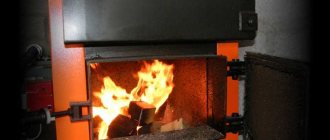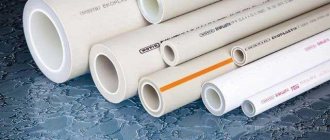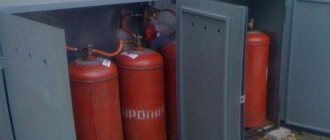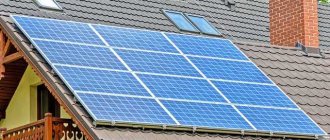In recent years, living in a wooden house has become a fashionable trend. And there are reasons for this. For example, living in it is quite comfortable and at the same time wood is an environmentally friendly building material. If earlier life in a wooden house was associated with many inconveniences, now it is comfort and the use of innovative technologies. The heating system occupies a special place in the house. Some people refuse the idea of hiring qualified specialists who charge quite a lot of money for their heating services. For this reason, they decide to make heating for a wooden house with their own hands. We will look at the basic principles of installing a heating system, as well as possible options for how and from what it can be made.
General information about heating in timber houses
Houses made of timber have low thermal conductivity of the walls, so the heat stays in them for a long time. In rooms of such a structure, it is possible to achieve the required temperature much faster (with the same wall thickness).
To take advantage of the benefits of wood as a building material, it is necessary to establish an efficient heating system that will evenly distribute heat inside the house. In this case, it is necessary to take into account all the features of the building design. The choice and arrangement of heating is carried out taking into account such criteria as cost, complexity of work, prompt installation, simple maintenance, efficiency, and so on.
When planning to heat a house made of laminated veneer lumber, you can consider any type of system that the modern equipment market offers. In this article we will look at each of them separately. Before you start choosing the type of heating in a house made of timber, you need to calculate the area of the heated premises. This will help determine the required thermal power of the equipment.
For calculations, you need to find the product of the area and 100 watts. The resulting value will correspond to the power required to maintain a temperature of +25 °C in the premises of a timber house if the temperature outside is –30 °C. Accordingly, in milder climatic conditions the thermal power consumption will be lower.
Advantages and disadvantages
Heaters have become very popular lately. If there is no gas on your site, then you can heat your home using this method. The main advantages of electric heating of a wooden house include:
If you position all the heaters correctly, then the heating effect will be several times higher than with stove heating.
- This type of heating involves no emissions into the atmosphere.
- You can install the heaters yourself.
- Thanks to electronic thermostats, you can easily regulate the heat in your home.
- If you choose the right manufacturers, then repairs will rarely be necessary.
- You no longer need to stock up on firewood or coal.
- Each type of electric heater for a wooden house is compact.
- Electric heating can be used as main or additional.
In addition to the advantages, heating in a wooden house can also have disadvantages, which include:
- Today, the power grid can often be shut down for repairs. If there is no light, then there will be no heat.
- You will need to purchase a diesel generator. In the event of a power outage, your system will operate reliably.
- You will need to change the meter to a two-tariff one.
- Electric heaters are considered fire hazardous devices. In order to protect your home, you must take into account all the recommendations.
If you don’t know which electric heating to choose for a wooden house, then watch the video.
Tips on what to consider when choosing heating
When choosing heating systems for a house made of timber, in addition to their cost, it is necessary to take into account the complexity of installation and operating costs. It is necessary to analyze the efficiency of the equipment, as well as the ease of operating the system and monitoring the temperature in the premises. It is worth considering the level of complexity of carrying out preventive measures and repair work, operational safety and environmental characteristics.
When designing a house made of timber for permanent residence, you should pay attention to heating systems that use liquid or electric current as a coolant. This is precisely the conclusion that arises after comparing the advantages and disadvantages of different heating options. The same result will be obtained when comparing the cost of heating a house using different systems.
If you plan to build a country house from timber for seasonal living, then networks with a liquid coolant turn out to be completely ineffective. For such a house it is better to equip a fireplace or electric heating.
Choosing a boiler is an important planning milestone!
If your closest source of energy is gas, then depending on the size of your home, you should purchase a wall-mounted or floor-mounted boiler. These boilers are equipped with a built-in pump, as well as special protection. If you do not have a chimney, you should choose a boiler in which the combustion chamber is closed. And to remove air from the boiler, you can use a coaxial pipe. This method will allow you to save money on chimney installation. Moreover, the wall-mounted gas boiler is automatic. If the system volume exceeds 100 liters, then it is recommended to install a second expansion tank. In case of heating, it will also compensate for pressure. This will prevent the pressure in the boiler from rising as the temperature rises proportionally.
Which heating is better for a house made of timber: autonomous or local?
The heating system option must be chosen at the house design stage. In this case, it is necessary to take into account its intended purpose. For a country house where people do not live permanently, the heating requirements are not as stringent as for a cottage where a family with children permanently lives.
Autonomous heating systems operate independently of centralized heating networks. These systems are currently the most common heating option for low-rise buildings. Individual heating is the most effective and economical option for a private house made of timber.
There are also local heating devices. These include various convectors, heat guns, fireplaces, infrared heaters, stoves, etc. Each such device can provide a comfortable temperature only in a small space. Local heaters are installed in a separate room and are most often used to heat objects not intended for permanent residence.
Principles for calculating battery power
To choose heating radiators for a country or private house, you need to perform calculations based on the fact that to heat one square meter. m of living space requires approximately 95–125 kW. To warm up a room with average parameters (one window, one door, ceiling height up to 3 meters), it is necessary to heat the coolant to 70 °C.
Article on the topic: How to make a wooden floor in a brick house
If actual parameters differ from those indicated, adjustments must be made. For example, with a ceiling height of more than 3 meters, it is necessary to increase the calculated power of the batteries as many times as the actual height exceeds the conditional one. For low ceilings, recalculation is carried out in the opposite direction.
A decrease in coolant temperature for every 10 °C relative to the specified average level forces a corresponding increase in the design power of heating devices by 15–20%. If the room is corner and has two windows, the average calculated power of the batteries is increased by 1.5 times.
The heat transfer of radiators largely depends on their connection diagram. The average calculation is based on the fact that the heated coolant is supplied to the upper side inlet, and the return is connected to the lower inlet diagonally. Other connection options are less efficient and reduce the heat dissipation of batteries by 5–10%.
Note! The number of sections for radiator models of this type should not exceed 10 pieces - further expansion will not help increase power, since the coolant will not be able to fully warm up such a battery.
Comparison of thermal power of different types of batteries
Calculating radiator parameters
Particular care should be taken when choosing panel and tubular batteries. Manufacturers include in their product line models of the same power, but with different geometric parameters. When choosing, take into account the features of the installation location - the height from the floor to the window sill, the length of the wall in an elongated room, etc.
Homeowners choosing heating devices and wanting to purchase the best options at a reasonable price opt for steel or aluminum models. The cost of the most reliable, imported bimetallic radiator is prohibitively high, and cast iron batteries have many serious disadvantages. According to statistics, those who are thinking about which radiators to choose for a private home or country house choose aluminum sectional or steel panel models based on the ratio of price and practicality.
Video with tips for choosing heating radiators:
Stove heating for a house made of timber: pros and cons
Stove heating is considered the most ancient option for ensuring a comfortable temperature in the house. The operating principle of the furnace is based on obtaining thermal energy as a result of burning solid fuel (wood, coal, briquettes, etc.). In modern houses made of timber, the stove is used quite rarely and only as a backup heat source.
Stove heating provides heat to the room in which the stove itself is located. The advantage of stoves is that they can operate on different types of fuel. This circumstance determined their popularity in many countries of the world.
However, stove heating also has its disadvantages. Some owners of private houses believe that one stove is enough to heat their home. But if a house made of timber has more than 3 rooms or, for example, two floors, then you will need to install two or even three stoves. Such a solution will take up a lot of usable space. In addition, owners of wooden houses should not forget that stove heating is a fire hazard.
Installation of a chimney or boiler room
The chimney can become very hot during operation of the heat generator, which carries a significant risk of wood fire. Therefore, it is necessary to use certified chimneys made of fire-resistant materials with insulation. The best option is considered to be a free-standing brick chimney with its own foundation, which rises above the house to a height of up to 2 meters.
This design provides excellent traction, effectively removes combustion products and reliably protects a wooden house from temperature effects. Installation of a gas boiler must be carried out on a fire-resistant floor or wall base. If a solid fuel heat generator is used as a heat source, it is necessary to take care of a full-fledged boiler room in which all horizontal and vertical surfaces are not hot.
The article was written for the site.
Tags:Heating boiler, Heating radiator
Advantages of electric heating of a house made of timber
Electric heating is an effective solution for any home. This option allows you to uninterruptedly heat the rooms and accurately maintain a comfortable temperature in them. Such systems are used in many European countries.
Electric heating is versatile. Electric boilers and various heaters can be used for local and autonomous heating systems in timber houses.
The advantage of this option is its affordable cost, ease of control, minimal maintenance requirements, ease of installation, the ability to regulate the temperature using a timer, compact size of the equipment, low noise and no emissions of combustion products. To install electric heating in a house made of timber, you do not need special approval of the project from administrative authorities.
Recommended reading:
- Options for laminated timber houses for every taste and budget
- Construction technology of a half-timbered house
- Types of foundations for a private house
Additional benefits can be obtained by installing electrically heated floors. In this case, the air in the rooms will not become too dry and drafts characteristic of systems with water radiators will not occur. When installing electric heated floors, it becomes possible to accurately and easily control the temperature in the room. At the same time, heating devices will not interfere with the interior design of the premises.
The disadvantage of electrically heated floors is the complexity of installation and repair, the high cost of heating due to the high cost of electricity. Even economical systems in the cold season will consume several tens of kW per day during the day.
Installation of a "warm floor" system
We use heating mats
Stage 1: it is most convenient to use electric heating mats, although they will cost 20-25% more than cable. A groove is made in the wall and floor where the cable in a corrugated tube will go, connecting the heating mats to the energy source, and the temperature sensor. Then all debris and dust are removed from the floor surface. Heating mats can be placed directly on old tiles. The mat mesh is easy to cut, and if the mat is rotated, a cut can be made, but the heating cable must not be touched.
Stage 2: the mat is attached to the floor using a heat gun or tape. Sometimes an adhesive layer on the mesh is already applied to the surface of the mat, and the mat itself sticks well.
Stage 3: a layer of tile adhesive is applied on top of the mat. You need to let it dry completely for 5-7 days.
Stage 4: all connections must be made and the thermostat connected. The functionality and serviceability of the heating system is checked.
Stage 5: You can lay the floor covering on the completely dried adhesive base.
We use a cable
main source of heating
Stage 1: the floor is cleared of old tiles or other material before laying the heat insulator. All debris is swept out and dust is removed.
Stage 2: sheets of heat insulation are laid out on the cleaned surface. The joints between the sheets are taped.
Stage 3: a reinforcing mesh is laid on top of the thermal insulator and an intermediate screed no thicker than 3 cm is poured. Wait 3-5 days until it dries completely.
Stage 4: after the screed has completely dried, mounting tape is applied to it.
Stage 5: a detailed cable laying diagram is drawn up. You need to start laying from the bridge connecting the wiring to the thermostat. It is necessary to take into account the cable manufacturer's recommendations regarding the minimum bending radius of the cable and the minimum distance between the cable threads. Do not run the cable under areas where plumbing fixtures and furniture will subsequently be installed.
Stage 6: the thermostat is installed inside the corrugated tube. All components of the electrical system are connected.
Stage 7: after checking the operation of the heating system, a second screed 3-10 cm high is laid. You must wait a month until it dries completely.
Stage 8: Now you can lay any flooring.
Is gas heating suitable for a log house?
Autonomous gas fuel heaters are used very rarely in local heating systems for houses made of timber. This is due to the presence of open fire in such devices. There is another significant drawback of gas heaters. During fuel combustion, they burn oxygen in heated rooms.
At the same time, gas fuel is the most common energy carrier for autonomous heating systems in private homes. The main condition for such systems is the ability to connect to the central gas main. Modern heating boilers that run on gas are characterized by their efficiency, automated control system and high power. Such a unit can effectively heat a house made of timber with an area of several hundred square meters. There are floor-mounted and wall-mounted models of gas boilers. The latest devices can be used without installing separate chimneys. The main disadvantage of autonomous heating using such boilers is the high cost of laying a gas pipeline to the house. In the absence of such an opportunity, some developers use gas holders or liquefied gas cylinders. Such decisions are not always economically justified.
Despite all its shortcomings, gas heating is considered the most convenient and cost-effective option for a house made of timber. Very often, floor heating systems are used together with such boilers. In private houses with a small area, gas convectors can be installed. To install heating systems using gas fuel, you will need equipment such as a gas boiler (the best option is automatic wall-mounted models with a pump), polypropylene gas pipes and special shut-off valves.
It is important to design and professionally install a chimney for a gas boiler. A disk with a small hole is built into its base. To calculate and arrange the chimney structure, you will need an experienced stove maker. It is not allowed to place a gas boiler in basements. Such equipment is located in the hallway or in the kitchen. Installing a convector allows you to achieve more economical operation of the heating system, since it becomes possible to regulate the temperature in individual rooms of a log house.
Shrinkage of walls, pipe insulation
Shrinkage of a wooden structure is a natural process of reducing and compressing walls due to the evaporation of moisture from the pores of the wood. The intensity of this process depends on the type of material used. Houses made of laminated veneer lumber and kiln-dried timber are the least susceptible to shrinkage. But such materials are more expensive. Most often, affordable logs and beams of natural moisture are used, which cause significant shrinkage. Before installing heating in a private house, it is advisable to let it sit for 8-12 months . If this is not possible, pipe installation is carried out using compensators and sliding fasteners.
Thermal insulation of heating pipes
Wood is equally adversely affected by strong thermal effects and moisture in the form of condensation on pipes, which leads to cracking, deformation, mold and rot. The most economical and correct way to eliminate these problems will be to insulate the lines with a special tubular material.
Other modern types of heating a house made of timber
Heating a house made of timber with convectors
Convectors powered by electricity are easy to install and easy to maintain. They are usually attached to the wall or installed on the floor. To save free space, electric convectors can be mounted directly into the floor near the baseboard.
Such equipment quickly reaches the required operating temperature. Moreover, their efficiency reaches 90%.
Modern models of electric convectors are capable of operating from a network with a voltage of 150 to 242 V. Unfortunately, such a unit is capable of heating only the room of the timber house in which it is located. Considering this circumstance, it is necessary to correctly select the power of the convector for each room. For rooms with an area of about 20 m2, an electric convector with a power of 2000 W is required.
In addition to power characteristics, other equipment parameters must be taken into account. The most important points include the presence of a built-in temperature controller. It can be mechanical or electronic. The most advanced convectors have special sensors that can be programmed to maintain a special temperature regime, taking into account the days of the week and time of day.
The advantages of electric convectors include the small size of the equipment and uniform distribution of heat throughout the room. The most compact models can be hidden in the baseboard.
It should also be noted that there are disadvantages in convectors operating from the electrical network. The disadvantages of such devices are especially evident in houses made of timber with high ceilings. In such buildings, the heat generated by electric convectors is collected under the ceiling. At the same time, the movement of warm air currents contributes to the appearance of drafts and raises dust from the floor. If an effective ventilation system is installed in the room, the convector significantly loses efficiency. Some of the heated air will be removed by ventilation, so the room may be somewhat cool. If there are natural ventilation systems in a house made of timber, there is no such effect.
Liquid fuel
Liquid fuel boilers are often considered as an alternative to gas-fired appliances. If there is no possibility of connecting to a central gas pipeline, in houses made of timber, boiler equipment that runs on diesel fuel can be used. Such boilers have a high cost, but also have a number of advantages: the affordable price of diesel fuel and the ability to install autonomous heating without connecting to gas mains while maintaining the ability to automate the heating system control process. The efficiency of such equipment can be comparable to that of gas boilers. It should be taken into account that a separate spacious boiler room is required to accommodate the liquid fuel boiler.
Air heating
Air heating systems for houses made of timber are widely used in European countries, but are not yet well known in the Russian Federation. The operating principle of such systems is based on the movement of heated air masses in an air duct system, which is distributed throughout all rooms of the building. Thus, not only is a comfortable temperature maintained in the rooms, but the timber house is also effectively ventilated.
Air heating systems are characterized by high efficiency. They are distinguished by functionality and provide an aesthetic appearance to the interiors of a house made of timber. The level of heat transfer of such equipment is higher than that of other types of heating equipment. It should be taken into account that air ducts for supplying warm air are designed before the house is built, and their repair is a rather labor-intensive operation.
The principle of operation of air heating is that outside air is supplied to the air heater using a fan, and then distributed to individual rooms of the house. Air masses that enter the system from the street can be cleaned of dust, foreign odors and various bacteria. If necessary, the air can be additionally saturated with oxygen. Liquid fuel equipment or gas heaters can be used to heat the outside air.
The disadvantage of such systems is their high price and cumbersome ventilation ducts.
Air heating in a house made of timber must be designed and installed under the strict supervision of specialists, which can also be attributed to the disadvantages of such a system.
Warm floor
There are two types of heated floors - water and electric. Such systems provide additional comfort. If there are heated floors in a house made of timber, warm slippers will not be needed in winter, and small children will be able to play on the floor without the risk of catching a cold. Modern underfloor heating systems are easy to install, but it is better to design them at the stage of building a house. In this case, you will not have to disrupt the aesthetics of the interior after the renovation is completed.
In water-heated systems, water is used as a coolant, which circulates through a closed circuit built into the floor screed. Water is heated in such a system using a heating boiler.
To install electrically heated floors, a special cable is laid in the screed.
Advantages of heated floors:
- thermal energy is evenly distributed throughout the room;
- the air in the rooms of the house does not dry out;
- when using heated floors there is no risk of drafts;
- such systems do not affect the interior design of premises;
- simple room temperature control.
Flaws:
- labor-intensive installation;
- increasing the width of the screed reduces the height of the room;
- expensive repairs;
- The disadvantage of electric heated floors is the high cost of electricity.
The most common option for heating houses made of timber in our country is a system with a liquid coolant, which, as a rule, is water. It circulates in a closed loop: “heating boiler - radiators”. Residential buildings use systems with forced and natural circulation of coolant fluid. Natural circulation occurs due to the difference in density of cold and heated water. Such systems can be used in timber houses whose area does not exceed 100 m2. For forced circulation of the coolant, the heating system is equipped with a special pump, which creates the necessary pressure in the line.
The advantage of water heating is the high heat capacity of water and the low cost of installation. At the same time, heating systems with natural coolant circulation are completely autonomous, since they can operate regardless of the presence of a connection to the electrical network. The disadvantages of this option include the short length of the system, which can only be used to heat houses with a small area.
Heating with forced water circulation can be used for houses made of timber of any size. But it should be taken into account that in this case the operation of the heating equipment will depend on the availability of a connection to the electrical network. In addition, the arrangement of such systems will be more complicated, since it is necessary to install additional equipment. The main disadvantage of water heating is the need to drain water in winter when the heating is turned off (water can freeze in pipes and radiators, which will lead to cracks). That is why such systems are rarely used for heating dachas, or instead of water, non-freezing liquids are used as a coolant.
Baseboard heating
A good option for a house made of timber is to install baseboard heating. In this case, the heat is evenly distributed from the baseboard along the wall surfaces, which prevents the formation of condensation and water does not get inside the wooden walls.
According to its characteristics, baseboard heating resembles heated floors, which have recently become one of the most popular solutions for houses made of timber.
Combination boilers
Leading brands engaged in the production of heating equipment for private homes offer a wide selection of autonomous heating boilers that can operate on several types of fuel (for example, wood, briquettes and electricity). Such models allow owners of log houses to heat their premises even during a power outage.
The cost of heating a house made of timber consists of two components - the price of equipment and the cost of installing the heating system. In order for the heating system to operate economically and without failures in the future, higher costs will have to be incurred when purchasing, connecting and installing equipment.
Features of heating systems
The most common heating in Russia is using gas, since it is quite cheap. In addition, the installation of a gas-powered heater is quite simple; you can install it yourself.
That is why quite a lot of people choose the type of heating using gas (cheaper than heating with electricity and convectors).
To install a heater, you need to properly design your house. You should also have a diagram for installing the heater at hand to make installation more convenient.
In addition, you need to mark the location of the gas pipes on the house design. If they are not there, you will have to install a gas pipeline or buy a gas cylinder.
Video:
Water heating is one of the most popular. The principle of its operation is that the water in the boiler is heated and then flows through the pipes, filling the house with heat. The same principle applies to apartment buildings.
In addition to the pipes, water enters the radiators, and from there it returns back to the boiler and is heated again. This type of heating is often supplemented with convectors (wall-floor heater), especially where a single-pipe circulation system is installed.
Water can circulate through pipes naturally or artificially, using additional pressure.
To move water naturally, a single-pipe system is used; for an artificial method, a two-pipe system is used.
It should be remembered that in a single-pipe system it will most likely not be possible to maintain the temperature at the same level, since distant radiators will receive water at a lower temperature for heating.
Therefore, a single-pipe system is better suited for small rooms; it is not recommended to install it in a large house.
The most obvious disadvantage of a single-pipe system is insufficient heating of the lower radiators, which will lead to the fact that different floors of the same house will be heated to different temperatures.
In addition, this option will be optimal only if the boiler is located below the level of the radiators, because otherwise there will not be enough pressure to circulate water.
It should be noted that this option is quite economical, since it does not require a large amount of materials.
As for the temperature, it can be leveled by correctly setting the radiators or choosing those heaters that have a larger number of sections. In addition, radiators can be placed in places where the temperature is lowest.
A diagram of the house will help you understand how many radiator sections will be needed to heat a room of a given size, and where it is best to place the radiators.
Installation of a two-pipe system requires the installation of an additional water tank. You will also need a pump to be able to install the boiler in any room.
It is better to take boilers with a pump included. To better understand which types of heaters are best suited, you can ask a specialist.
Types of heating radiators for a house made of timber
To install a water heating system for a house made of timber, in addition to boilers, it is necessary to select the most suitable pipes, connecting fittings and radiators. The modern heating equipment market offers a wide selection of different types of batteries. Sectional radiators continue to be the most popular. For their production, materials such as cast iron, steel and aluminum alloys can be used. The most recent developments in the field of heating equipment include bimetallic radiators.
Cast iron is a traditional material for the production of heating batteries. Products made from it are distinguished by their heavy weight and high thermal inertia. Cast iron radiators are attractive due to their reliability and long service life.
Modern cast iron batteries differ from traditional Soviet models in a more attractive design.
Aluminum radiators are light in weight, but do not withstand pressure drops in the system and are therefore considered not reliable enough. Bimetallic batteries are made from steel and aluminum, so they combine the best characteristics of these materials. The aluminum body can significantly reduce the weight of the structure, and steel pipes transfer heat well and are reliably protected from corrosion. The presence of a large selection of different radiator models creates certain difficulties for buyers when choosing products for heating a house made of timber. To avoid making mistakes, it is worth consulting with experienced specialists who are well acquainted with modern heating equipment at the heating design stage. Special attention should be paid to the qualified installation of such systems.
Types of heating batteries
To choose radiators with the best performance for heating a private home, you need to understand the advantages and disadvantages of heating batteries that the market offers. Each type of heating device should be considered based on the properties of the material and design features.
Types of heating radiators
Radiators vary
:
- by material of manufacture (steel, aluminum, cast iron, bimetallic);
- by design (sectional and solid):
- according to the principle of heat transfer (radiating thermal energy, convection and combined).
Steel
Among heating radiators for private homes, steel models are in steady demand. Their list of advantages includes:
Article on the topic: Is it possible to have a wooden house covered with siding?
- relatively light weight, which simplifies installation;
- fast heating and cooling – allows you to flexibly regulate the room temperature when using a thermostat, saving fuel;
- quite long service life;
- a wide selection of models with different functionality and appearance.
Kermi steel radiator in the interior
The disadvantages of steel heating devices include:
- tendency to corrosion - such batteries are designed for installation in a closed heating system, since the free penetration of air into the coolant accelerates the process of destruction of the metal;
- tendency to become overgrown due to the rough inner surface - regular flushing of the system is required;
- restrictions on the characteristics of the coolant - the addition of alkaline reagents should be avoided.
To understand which steel heating device to choose, we will consider each type in detail. Manufacturers offer sectional, tubular, panel and convector steel heating devices.
Sectional
The battery consists of individual units, the number of which can be changed. This is a serious advantage of heating devices of this type. If the thermal calculation is performed incorrectly and the radiator power is not enough, additional sections are added. If the house has been insulated and the need for powerful radiators has disappeared, it is enough to remove the extra sections to reduce energy consumption. The advantages of sectional models also include a stylish design that will fit into any interior. The disadvantage is the large number of joints, which increases the risk of battery depressurization.
Sectional heating radiator in the interior
Tubular
Panel
Convector
Cast iron
When considering different types of radiators, one cannot ignore the classic option - cast iron batteries. To this day, working copies installed before the revolution have been preserved in old houses. In Soviet-built houses, mass-produced cast iron radiators are used.
The advantages include durability and corrosion resistance, high heat transfer, and the ability to install additional sections. The list of disadvantages includes a tendency to overgrow - over time, the heat transfer of such batteries decreases, as the free space inside the case narrows. Unlike modern heating appliances, cast iron radiators require regular painting. Disadvantages also include heavy weight, which makes transportation and installation difficult.
Before choosing a cast iron battery for a private home, you need to pay attention to its high thermal inertia. It heats up and cools down slowly, which makes it impossible to quickly regulate the microclimate in the room.
Today, in private homes, cast iron radiators are installed if they want to emphasize their individual image. Manufacturers offer original floor models, decorated with artistic castings, which will perfectly complement the interior in a classic style.
Article on the topic: Finnish sauna benefits
Variety of cast iron decorative radiators
Aluminum
When deciding which heating devices are best for a private home, pay attention to aluminum models. Such radiators are in growing demand among private developers due to their light weight and ease of installation, attractive appearance, and the ability to add and remove sections. The cost of the product depends on the manufacturer. Domestic products are as affordable as possible; this is a budget country option. In a country house, it is better to install imported products; they are more reliable, but also more expensive.
Aluminum radiators:
- may leak due to the presence of threaded connections;
- aluminum is picky about the acidity of the coolant - using a liquid with unsuitable parameters damages heating devices;
- due to increased heat transfer, they can poorly warm the lower part of the room - the heated air quickly goes up and the floor remains cold.
But despite this, it is wise to choose an aluminum radiator for a private home - the metal quickly heats up and cools down, making it possible to quickly change the heating level of the room in accordance with weather conditions and microclimate requirements. In this regard, aluminum batteries are the most practical.
Bimetallic
Such heating devices combine the advantages of steel and aluminum models. The inner surface of a durable iron alloy is undemanding to the characteristics of the coolant and ensures the structural strength of the battery. The external aluminum casing is characterized by good heat transfer, due to which the radiator effectively warms the room.
The bimetallic radiator is designed for high operating and pressure testing, which makes it the optimal choice for installation in an apartment connected to a central heating network.
Considering the high cost of high-quality bimetallic models, in private homes it is better to use a budget option for heating, designed to work in an autonomous system.
Installation of a heating system in a timber house
To lay heating system pipes in timber houses, as a rule, two methods are used:
- External wiring involves laying communications along the walls, above the floor or under the ceiling. This is the simplest installation option, which, however, can disrupt the stylish interior design.
- Hidden installation is carried out inside building structures (walls, interfloor ceilings, etc.).
For heating distribution in a house made of timber, plastic, copper or steel pipes are used:
- Plastic pipes are the most inexpensive and practical option, chosen by many developers.
- Copper communications are reliable, but are much more expensive. Such pipes should be used for external wiring, as they have a respectable appearance.
- Steel pipes for heating installations in houses made of timber are rarely used. This is due to their heavy weight and complexity of installation.
Shrinkage is a common phenomenon in timber buildings. Since it cannot be avoided, it must be taken into account when installing heating pipelines. Otherwise, the system may be damaged, which will lead to serious troubles. To avoid such problems, you need to consider the following points:
- The distribution of heat throughout the house made of timber and a stable temperature regime is an important condition for the uniform shrinkage of a wooden building. To ensure that these conditions are met, you need to choose a heating system wisely.
- In a house intended for permanent residence, you should not install traditional stoves. Such structures contribute to increased heating of individual walls, which can lead to cracks in their structure. The ideal option in this regard is heated floors.
- To prevent timber walls from getting wet, experts recommend protecting heating and water pipes with thermal insulation material.
- During installation of the heating system, the integrity of the load-bearing elements must not be compromised. To fasten risers, sliding fasteners and compensators should be used. During rigid installation of a house made of timber, shrinkage of the pipes can be torn out of the fasteners.
To create comfort and to ensure the efficiency of the heating system, it is necessary to properly insulate the structures of the walls, floors and roofs. In addition, it is necessary to take care of the tightness of window and door structures. Only if all the above rules are observed, heating a house made of timber will be reliable and efficient.
How to correctly calculate the number of sections
Calculating the power of heating radiators in a country house depends on several factors. The calculations look like this:
- The thermal power of the radiator section is determined. For cast iron appliances, the performance is 100-150 W, aluminum and bimetallic – 150-180 W. You can check the power of the battery section in the technical documentation.
The heated area is calculated. Calculations are performed as follows: the length of the room is multiplied by the width. The result obtained will be the total heated area.
Calculation formula - there is a simple rule that allows you to perform the calculations yourself. For every 1 m² of heated area, a thermal power of 100 W is required.
Calculate the heating radiators of a private house. Calculation of total battery power. Calculations are performed not based on the total area of the house, but individually, for each room, based on the location of the batteries in the house. For example, you can calculate how much thermal energy is needed to warm a room with an area of 20 m², taking into account that for 1 m², 100 W of energy is required, heating a room with a ceiling height of no higher than 2.7 m is performed by a 2 kW heater. Approximately 10-15% should be added to the result obtained for possible heat loss. It turns out 2.3 kW. If there is excess heat, you can reduce heat transfer by adjusting the radiators. A thermostat, in the form of a faucet or thermostat, is installed on bimetallic and aluminum batteries.
Functional purpose
After you have decided on the technical and structural features of the boiler, you need to answer the question: “What is the boiler for?” . Naturally, the first answer will be: “For heating.” And that's true. Such heating devices are called single-circuit.
But the functionality of the equipment can be significantly expanded; for this, a second circuit and storage tanks for hot water are used. Such boilers are called double-circuit and are used simultaneously in heating and hot water supply systems, that is, two in one, they are more expensive, but the functionality is higher and these are very compact solutions. There is no need for additional purchase and installation of water heating equipment.


